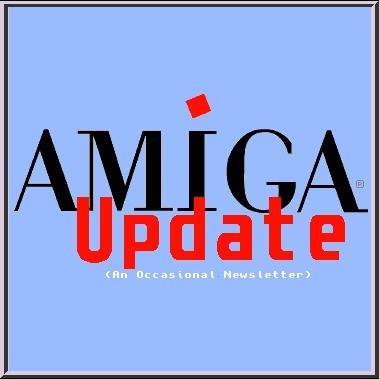Copy Link
Add to Bookmark
Report
Cider Digest #1998

Subject: Cider Digest #1998, 31 October 2015
From: cider-request@talisman.com
Cider Digest #1998 31 October 2015
Cider and Perry Discussion Forum
Contents:
Yeast Strains and Perry (Charles McGonegal)
Malus sieversii ... new cider cultivars? (Eric Johnson)
Re: Cider Digest #1997, 28 October 2015 (Michael)
Clearing Fresh Juice (John Ela)
keeping oxygen out of "blue oak" barrels (Seth Jones)
NOTE: Digest appears whenever there is enough material to send one.
Send ONLY articles for the digest to cider@talisman.com.
Use cider-request@talisman.com for subscribe/unsubscribe/admin requests.
Archives of the Digest are available at www.talisman.com/cider#Archives
Digest Janitor: Dick Dunn
----------------------------------------------------------------------
Subject: Yeast Strains and Perry
From: Charles McGonegal <cpm@appletrue.com>
Date: Wed, 28 Oct 2015 21:31:41 -0500
RE: yeast strains and SO2. Please watch the number of electrons. Per-ide,
-ide, elemental, hypo-ite, -ite, -ate, per-ate. They are all different
critters. If you are using sulfates, you are doing something weird.
RE: yeast strains, and cold crashing. A few winemaker-ciderists I know
practice cold crashing. The one who enters GLINT has always scratched his
head over remarks that his cider tastes like a 'macro' cider. I've long
suspected the cold crashing 'freezing' a certain pre-complete fermentation
ester profile in place.
RE: Perry. Sulfides likely come from poor yeast nutrition. Usually N,
possibly O. Perry is really susceptible to it. And diethyl-disulfide,
too. It might be potable-fixable, but the aroma will always be damaged. Oh,
and your initial acid correction should probably have been on the order
of 3-5g/L. That's a lot more than teaspoon. Even Asian pears have diddly
squat acidity.
Sent from my iPhone
Charles McGonegal
AEppelTreow Winery
Artisan Cider & Spirits
(262)496-7508
------------------------------
Subject: Malus sieversii ... new cider cultivars?
From: Eric Johnson <domain@a-horizon.com>
Date: Wed, 28 Oct 2015 22:09:07 -0600
A neighbor and I have embarked on a project to assemble a diverse
collection of Central Asian (and a few other) wild apples. As many cider
digest readers will know, USDA, in cooperation with other governments and
academics, participated in several collection expeditions to Central Asia
(Kazakhstan, Kyrgyzstan, etc.) in the 1990s. Subsequently, an orchard of
more than a thousand *Malus sieversii*, one of the domestic apple's major
progenitor species, was planted at the USDA apple collection in Geneva,
NY. Michael Pollan wrote about this work in his popular book The Botany of
Desire.
A number of papers on the genetic diversity of these apples put subsets of
them into "core collections" that represent the most diversity in the
smallest number of individuals. It appears that a collection of around 100
(plus a dozen or two?) specific individuals should include the vast
majority of the diversity in USDA's Malus sieversii orchard. There's lots
of genetic information in these apples that is not present in North
American domestic apples. That, of course, represents an opportunity.
Much work is already being done on disease and pest resistance with these
apples, in pursuit of resistant cultivars and rootstocks.
We think there must also be opportunities for new cider cultivars in these
genes.
This year, we grafted and began growing out several dozen of these apples
(many thanks to USDA Plant Genetics Resource Unit, Geneva, for making
scions available). Our grafted trees are now 1-year whips on Antonovka
rootstock. We chose Antonovka partly to generate scion material in volume
as quickly as possible. We are working with a handful of planting
locations and cooperating individuals for these whips, mostly in the
Boulder, CO area at this point. It'd be nice to graft these onto something
more precocious for early bearing, too, so we don't have to wait forever to
check out the fruit.
We'll continue to request scions from USDA, and continue to build out the
collection. We will also acquire some *Malus orientalis* (the other main
progenitor species of domestic apples) individuals that hold promise for
cider making.
I'm wondering whether other cider digest readers have any interest in this
diverse material. Our aim is to share it far and wide, and we'd welcome
participation from anyone here.
If so, I can think of a few ways we might consider working together:
1. As we generate scions & budwood (and, eventually, seeds), we're happy
to share. There won't be much this year, but more and more will be
available as seasons pass.
2. If you're interested in helping build out the diversity "core
collections" yourself, and are handy with grafting, would you be willing to
request some of the necessary individuals we haven't yet obtained? That
might move the whole project forward a bit faster.
3. If you're interested in Malus Sieversii more generally, there's a huge
number of seedlings in the USDA collection that could be grown out and
evaluated. Some members of the collection have fruit descriptions in their
records on the GRIN database. ( http://www.ars-grin.gov/npgs/searchgrin.html
... we can provide listings that may be of some use here, having downloaded
all the M. sieversii records and observations. My notes from last year
indicate 83 individuals of generally astringent flavor and Brix over 11.5)
The core collections, as well as other individuals of interest, are being
moved into the permanent collection, but there are hundreds of trees slated
for removal this year to make more room for the permanent collection, which
keeps growing. This Fall is the last opportunity to request these
individuals. (note: USDA is confident they are not going to lose any unique
genetics by removing these individuals. That's why diversity core
collections and other trees will be added to the permanent collection)
Also ... anyone can order open-pollinated Malus sieversii seeds from USDA.
They'll send you 100 seeds: 25 from each of four mother trees. No cost.
I've done this three years running.
So, once we have the diverse collection established, then what?
Well, plant lots of seedlings, and distribute seeds to anyone who wants to
do the same. I imagine we may have some isolated Malus sieversii, but also
trees mixed in with or near other apples, so these may be pure Malus
sieversii, or a mix of them plus whatever else is around.
Then, do some controlled crosses with known cultivars, grow them out for a
year or two and graft upper portions onto Bud9 or similar (for early
bearing). If I understand correctly it's possible to bring trees into
bearing in 5 years or so. Evaluate these offspring for characteristics of
interest.
Repeat, more or less until I can't tend apples any longer. I figure I
might get another 30 years if things go well.
Interested? Drop us a line or check out the beginnings of our project at
http://www.widespreadmalus.com
Eric Johnson
Boulder, CO
------------------------------
Subject: Re: Cider Digest #1997, 28 October 2015
From: Michael <hollinshedbrady@hotmail.com>
Date: Thu, 29 Oct 2015 07:31:59 +0000
Have you considered gas displacement? This is a technique in which the
gas pressure is regulated to barely anything higher than atmospheric. On
drawing off the cider, instead of air entering the keg the displacement
gas is drawn in, which of course should be sterile and not cause any
infection. Being at very low pressure the liquid should not produce a cloud
of undesirable bubbles when poured into the mug. I don't know much about
the system and so can't advise you beyond this, but a choice would need
to be made whether to use CO2 or N2. I know this has different effects
to the characteristics of live beer for which attempts using this method
in the UK have been made for extending the life of slow selling products
that are generally shipped here in 9 gallon "firkins".
Perhaps another solution is to decant your keg into a 4.5 gallon collapsible
"Poly-pin" . My third suggestion is to ask some friends around; you should
be able to make short work of 40 pints in an evening!
Mike Brady
Cider Digest #1997 28 October 2015
.....
- ------------------------------
Subject: Kegging Cider
From: Josh Kellermann <joshkellermann@gmail.com>
Date: Tue, 27 Oct 2015 12:27:02 -0400
....
I'm wondering how long a keg of cider will last after tapping. It'll take
me a while to get through a 5-gallon keg, so I don't want to keg all the
cider and lose a large portion every time I tap it.
...
------------------------------
Subject: Clearing Fresh Juice
From: John Ela <john@elacider.com>
Date: Thu, 29 Oct 2015 12:17:16 -0500
Hey folks,
I'm making a cider in which I backsweeten with a bit of fresh juice. Last
year we sent the whole batch through our plate and frame filter, down to 1
micron. Getting that juice through the filter was a real pain, we went
through lots and lots of filter pads. Any tips on clearing the juice a bit
before sending it through the filter to reduce the stress on our filter
pads?
John Ela
Ela Cider Co.
john@elacider.com
------------------------------
Subject: keeping oxygen out of "blue oak" barrels
From: Seth Jones <setjon@gmail.com>
Date: Fri, 30 Oct 2015 08:03:19 -0400
Hello
Getting close to the end of primary fermentation and want to ask about
people's experience with long term (6-9 months) storage in "blue oak"
barrels. I have real oak barrels enough for about half of my cider and need
to solve storage for the rest that is affordable and effective.
First idea is these drum liners placed inside the sealed blue oak barrel
with a layer of CO2 in the space between the liner and the top of the
barrel. Here's the link to the manufacturers page:
http://www.graylingindustries.com/industrial_packaging_products/drum_liners/liqu
id-tight_drum_liners.aspx
Anyone have experience with these? Is this enough to keep the cider fresh?
If these work I will probably go with them. Problem is you have to order a
minimum of 50 and I need 10. The bags are $8.77 each but there is a $250
service charge on top which kind of irks my frugal self and I need to keep
my costs down this year. If anyone wants to split a shipment contact me
offline. I'll be at ciderdays next week and maybe we could work something
out.
Second idea: In the new addition of Ben Watson's book he mentions people
wrapping the barrels with plastic. Has anyone done this? Is it effective?
Any other solutions would be greatly appreciated.
Thanks
Seth Jones
East Hollow Cider and Mead
------------------------------
End of Cider Digest #1998
*************************






















